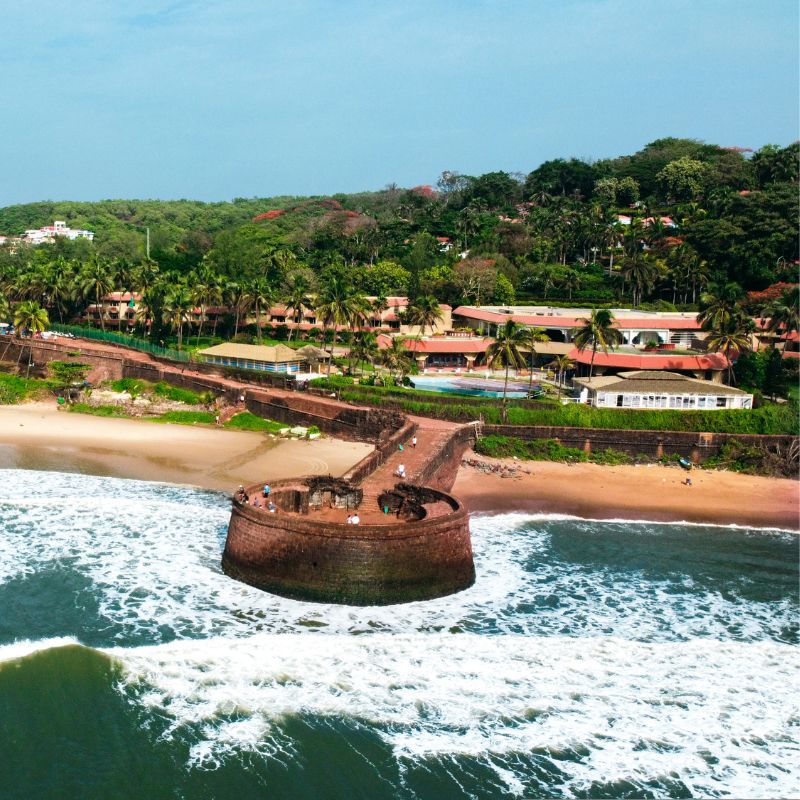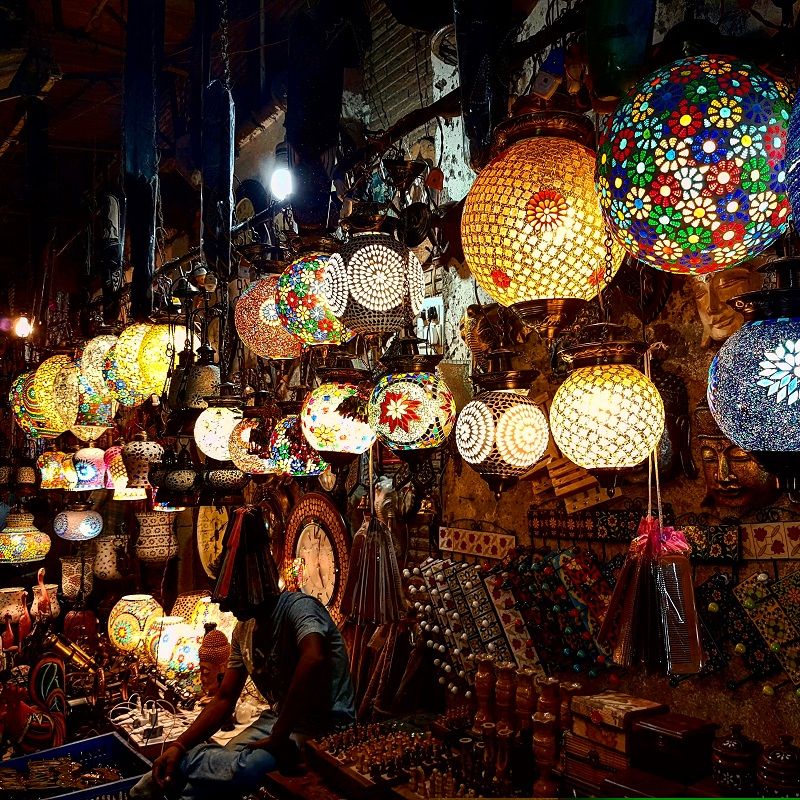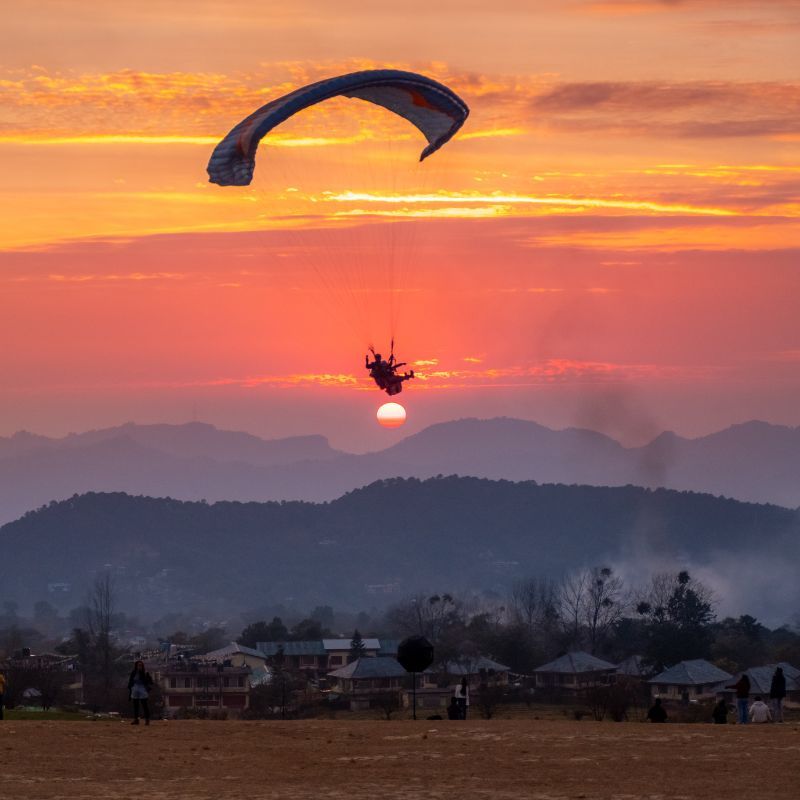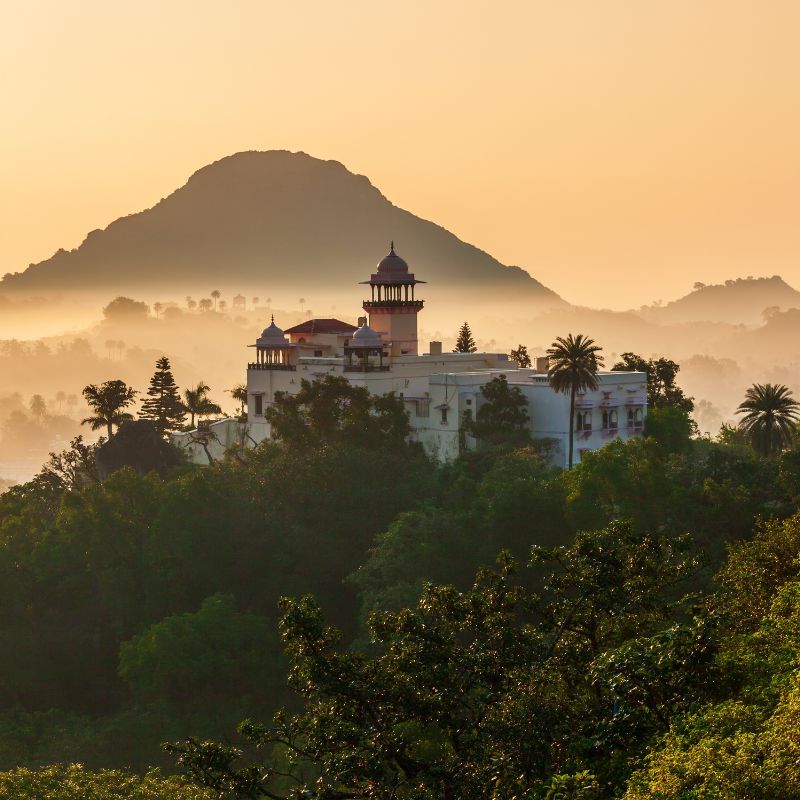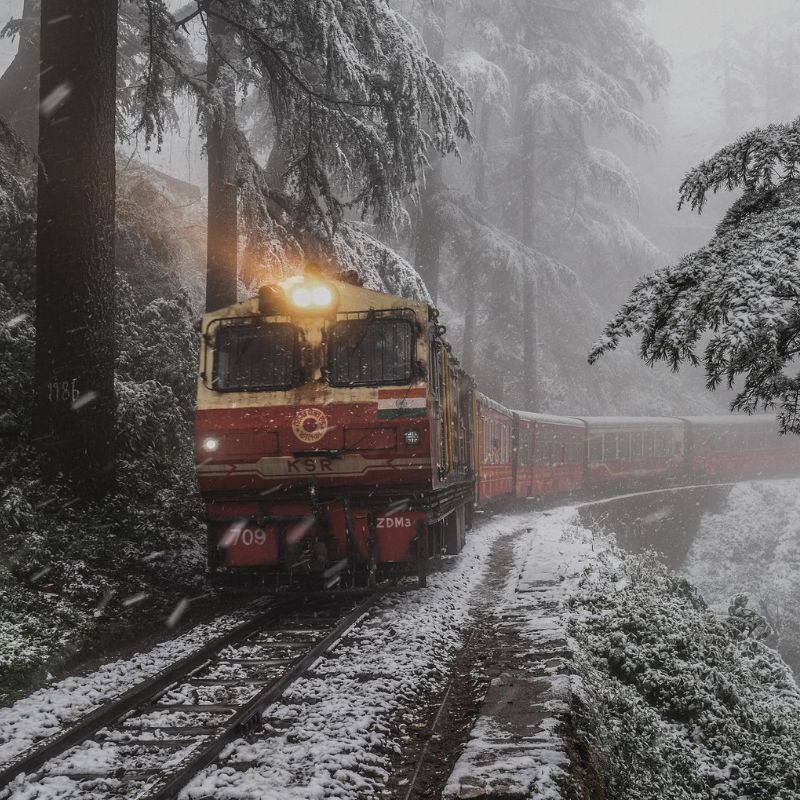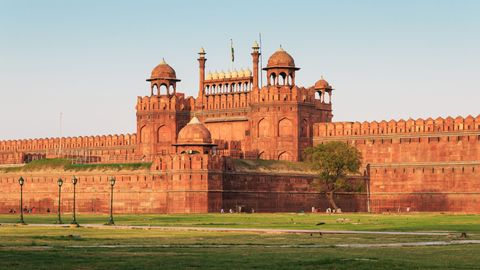
India is home to some of the world’s most majestic forts that stand as a testament to its rich and diverse heritage. Through the length and breadth of the country, these fortresses have witnessed the rise and fall of empires, battles that have shaped dynasties and the ever-shifting sands of time. Keep reading as we explore the biggest forts in India and the tales hidden within their monumental walls.
India’s forts are more than just stone and mortar structures; they are gateways to the country’s rich history, each resonating with the footprints of emperors, warriors, and dynasties that have profoundly influenced the subcontinent’s destiny. From the grandeur of the Mughal Empire, as reflected by the Red Fort and Agra Fort, to the medieval might of the Rajputs, as showcased by Chittorgarh and Mehrangarh Forts, these fortresses have stood witness to defining moments in Indian history.
Explore India’s most magnificent forts
Mehrangarh Fort, Jodhpur
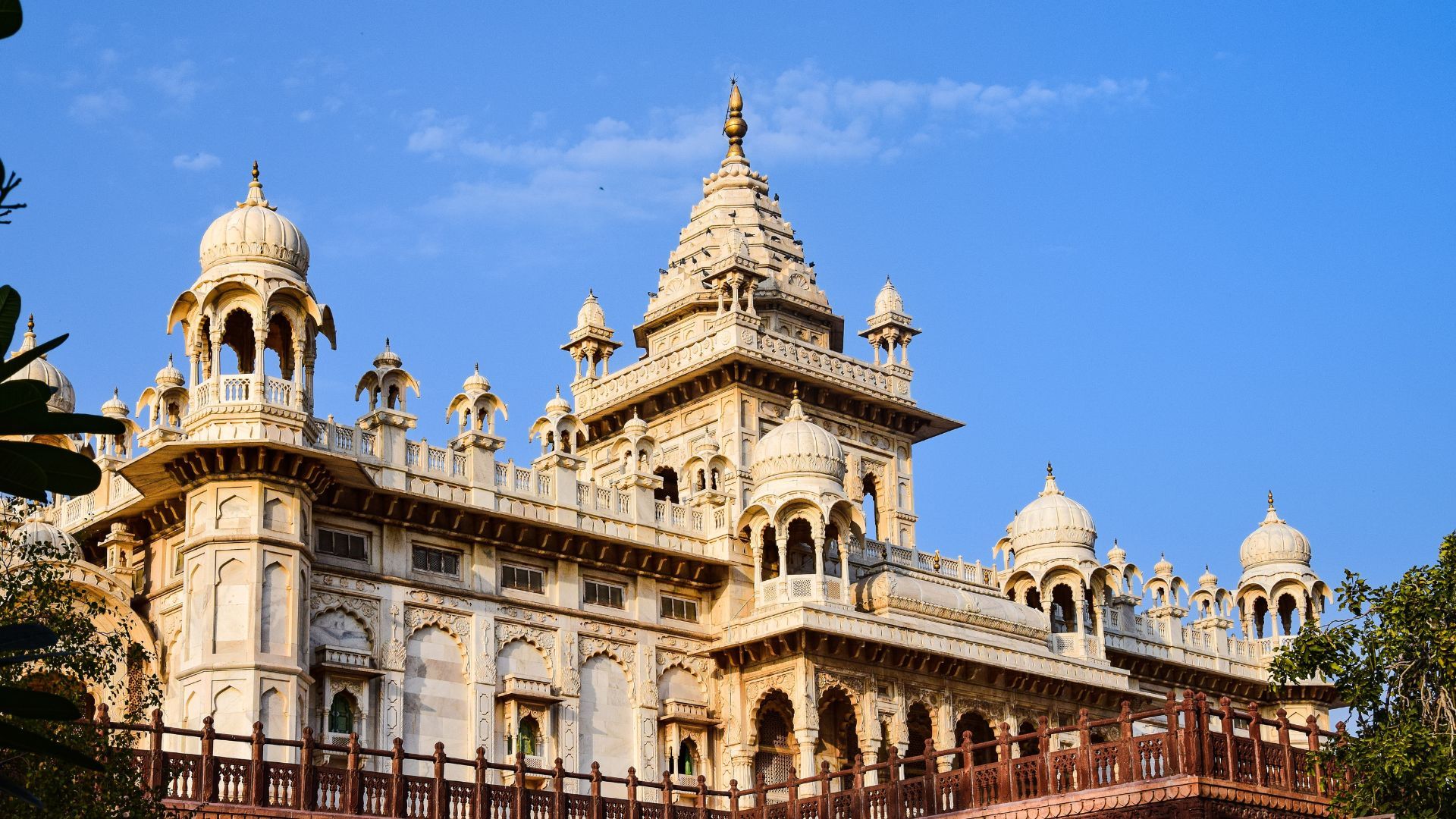
One of the tallest forts in the country, standing at an elevation of 410 feet, is the Mehrangarh Fort in Jodhpur, Rajasthan. This magnificent fortress features intricate glasswork and stunning Rajput architecture within its expansive 1,200-acre grounds, immersing you in tales from the past. With regal halls made of sandstone, the fort’s majestic museum exhibits palanquins, swords, paintings and antique musical instruments. Walk the steep pathways leading through various compounds and halls to climb up to the cannon point for a breathtaking vantage point to witness the sunset.
The fort is not only a historical treasure but also a symbol of Jodhpur’s rich cultural heritage. It hosts various cultural events, music festivals, and exhibitions, making it a vibrant centre of art and culture in Rajasthan.
Historical background: Built in the mid-15th century by Rao Jodha, Mehrangarh Fort served as the seat of the Rathore dynasty and played a vital role in the history of Marwar. It remains a symbol of the grandeur and resilience of the Rathore dynasty and is a must-visit destination for history enthusiasts and tourists exploring the royal heritage of Rajasthan.
Places to visit nearby: Jaswant Thada Museum, Phool Mahal Palace, Bal Samand Lake and Sheesh Palace Museum.
Timings: 9 am to 5:30 pm
How to reach:
By air: Jodhpur Airport is the nearest airport, approximately 8.4 km away.
By train: Jodhpur Railway Station is approximately 5.5 km away.
Book your stay at The Rohet House in Jodhpur on Booking.com
Book your stay at The Rohet House in Jodhpur on Agoda.com
Golconda Fort, Hyderabad
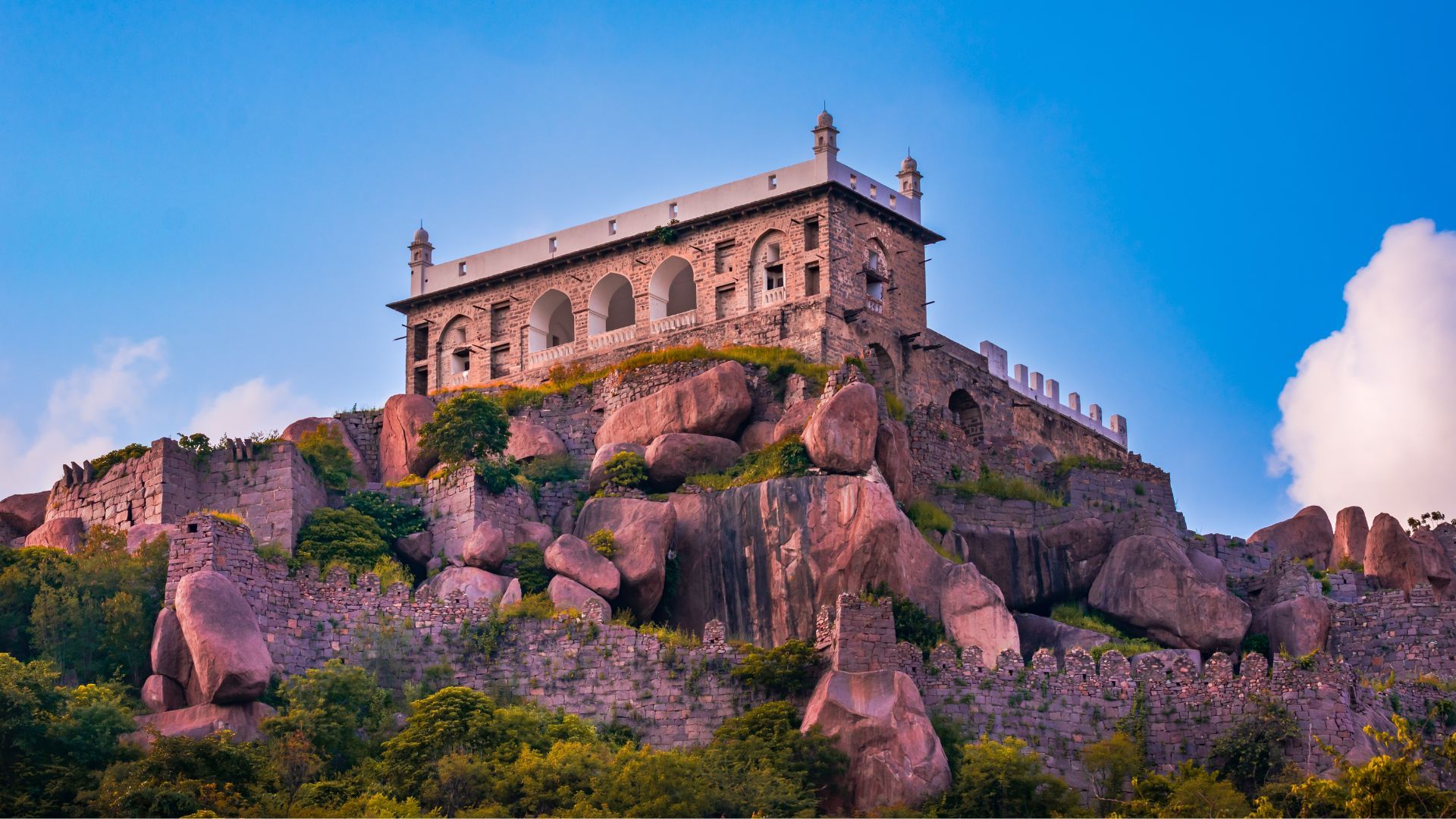
A popular attraction in Hyderabad, Golconda Fort is spread across 778 acres of land. Located on the outskirts of the city, this giant citadel attracts visitors from all parts of the world who come to admire its architecture. The fort’s architectural brilliance is truly remarkable, boasting intricately designed gates, majestic ramparts, and an ingenious acoustic system that allows whispers to be heard across vast distances. One must attend the light and sound show here, which shares highlights of the fort’s history.
Golconda Fort holds a prominent place in history as it has witnessed various dynasties, battles, and cultural exchanges. It is also a symbol of the Deccani culture, known for its distinct architectural style and contributions to literature and arts.
Historical background: Built in the 12th century under the Kakatiya Dynasty, the Golconda fort was rebuilt by several Qutub Shahi rulers in the 16th century. In the late 17th century, Golconda Fort was captured by the Mughal Emperor Aurangzeb after an eight-month-long siege. This marked the end of the independent Golconda Sultanate and its absorption into the Mughal Empire.
Places to visit nearby: Charminar, Chowmahalla Palace, Qutub Shahi Tombs, Birla Mandir and Salar Jung Museum
Timings: 9 am to 5:30 pm
How to reach:
By air: Rajiv Gandhi International Airport is the closest airport, approximately 30.5 km away.
By train: Nampally Railway Station is approximately 10.7 km away.
Book your stay at Trident Hotel in Hyderabad on Booking.com
Book your stay at Trident Hotel in Hyderabad on Agoda.com
Gwalior Fort, Madhya Pradesh
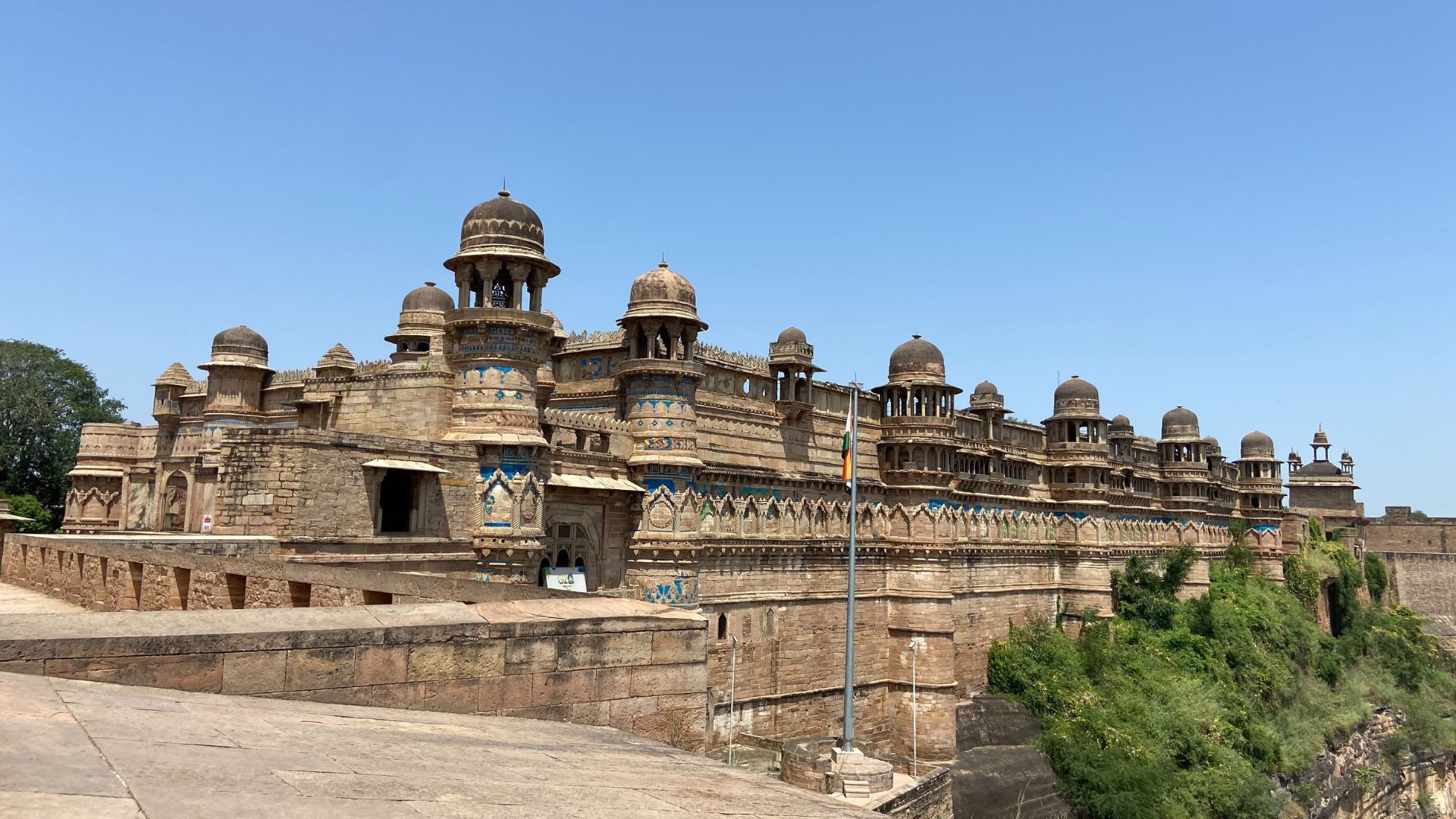
One of the most prominent structures in Madhya Pradesh is Gwalior Fort, showcasing timeless exteriors and interiors. Spread across almost 741.3 acres (3 sq km) of land, the fort houses two palaces and numerous temples inside its premises. The two main palaces, Gujari Mahal and Man Mandir, were built by Raja Man Singh Tomar in the 15th century. The fort is packed with water tanks and was initially built in sandstone and lime mortar. Sitting on a hilltop, visiting this architectural wonder allows you to admire the skilled craftsmanship of the glorious past.
Gwalior Fort played a pivotal role in several historical events and battles and was considered one of the most impregnable forts in North India due to its formidable defences and strategic location.
Historical background: Gwalior Fort has a history dating back over a millennium and has been ruled by various dynasties and empires. It was originally constructed as a mud fort in the 8th century by the Tomar dynasty, who were the early rulers of Gwalior. In the 16th century, Gwalior Fort came under the control of the Mughal Empire, led by Emperor Babur. The Marathas, led by Ranoji Scindia, captured Gwalior Fort in the 18th century.
Places to visit nearby: Sasbahu Temple, Jahangir Mahal, Tomb of Tansen and Gopachal Parvat.
Timings: Open 24 hours.
How to reach:
By air: Rajmata Vijaya Raje Scindia Airport is the closest airport, 12.4 km away.
By train: Gwalior Junction Railway Station is the closest, 3.1 km away.
Book your stay at Radisson Hotel in Gwalior on Booking.com
Book your stay at Radisson Hotel in Gwalior on Agoda.com
Chittorgarh Fort, Rajasthan
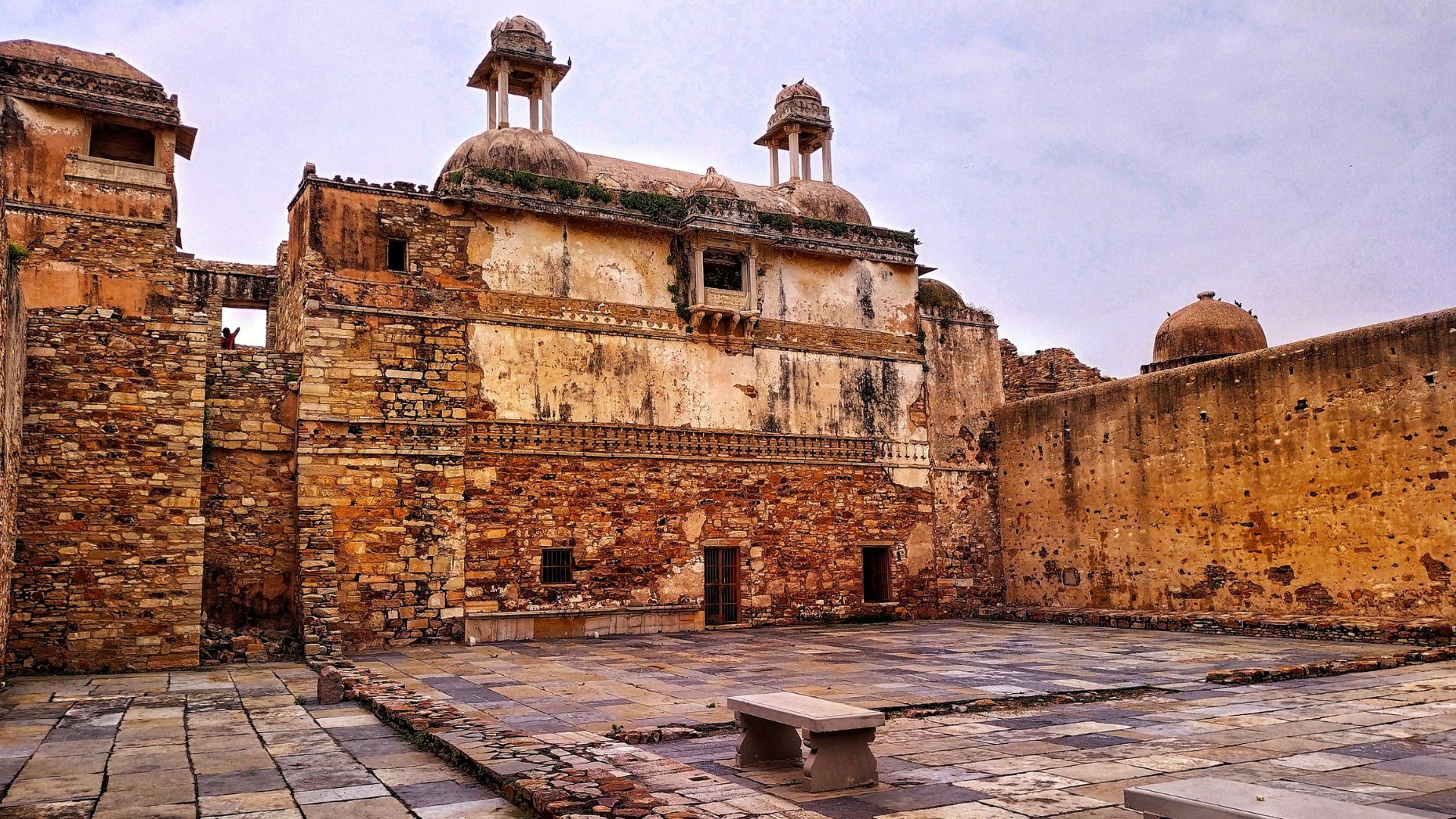
Chittorgarh Fort, nestled in the historic city of Chittorgarh in Rajasthan, is a colossal and iconic testament to the valour, resilience, and grandeur of India’s Rajput heritage. Perched atop a rocky hill, the fort is also one of the largest in India, spanning 700 acres of land. Its history is a tapestry of heroic tales, dramatic sieges, and unwavering loyalty to the Rajputana legacy. Within its formidable walls lie ornate palaces, intricate temples, majestic gates, and countless stories of chivalry. Chittorgarh Fort has borne witness to several pivotal moments in Indian history, including the legendary sacrifice of Rani Padmini and the prolonged sieges by various invaders.
Today, it stands as a UNESCO World Heritage Site and remains a prominent symbol of Rajasthan’s rich cultural and historical heritage, attracting visitors from around the world.
Historical background: Chittorgarh Fort’s origins are shrouded in myth and legend, but it is believed to have been established in the 7th century by the Maurya dynasty. One of the most significant events in the history of Chittorgarh Fort was the siege of 1303 by Alauddin Khilji. Despite the valiant defence, the fort fell to the Delhi Sultanate, and its defenders chose to perform ‘jauhar’, a mass self-immolation to avoid capture. Another famous siege of Chittorgarh Fort took place in 1568 when Emperor Akbar led an assault. The fort, under the rule of Rana Udai Singh II, faced an extended siege and ultimately fell to the Mughals.
Places to visit nearby: Kumbhalgarh Fort, Padmini Palace, Bassi Wildlife Sanctuary, Jagmandir and Lake Pichola.
Timings: 9 am to 5 pm
How to reach:
By air: Maharana Pratap Airport is the closest airport, 95.1 km away.
By train: Chittorgarh Junction is the closest railway station, 4.5 km away.
Book your stay at Hotel Amrit Manthan in Chittorgarh on Booking.com
Book your stay at Hotel Amrit Manthan in Chittorgarh on Agoda.com
Kangra Fort, Himachal Pradesh
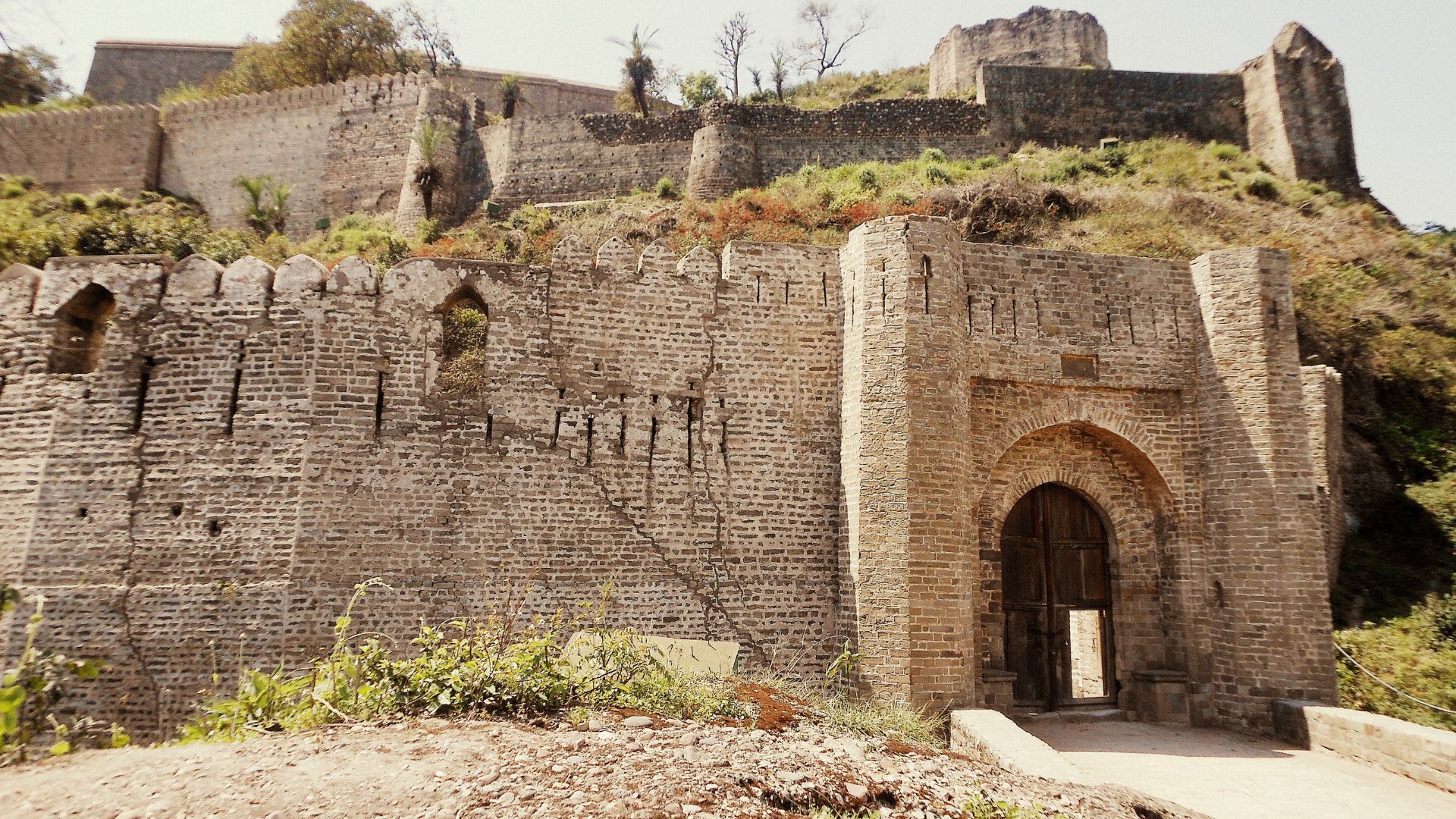
Nestled in the serene Kangra Valley of Himachal Pradesh, Kangra Fort stands as a testament to the enduring spirit of the time. As you approach its mighty walls, you’re transported back in time, to the era of Rajput dynasties, Mughal emperors, and Sikh rulers. The fort’s massive stone walls, intricate design, and strategic location atop a hill create a picturesque sight. Exploring the fort’s nooks and crannies, you’ll discover a rich tapestry of history, from the early Rajput rulers to the artistry of the Kangra school of painting. The fort, which is spread across 778 acres of land, also offers panoramic views of the lush Kangra Valley, making it a perfect blend of history and natural beauty.
Kangra Fort’s rich history, architectural splendour, and cultural legacy make it a must-visit destination for history enthusiasts and tourists alike.
Historical background: The history of Kangra Fort dates back over a thousand years. It is believed to have been founded by the Rajput family of Susharma Chand Katoch, who were the rulers of the region. The fort was a stronghold of the Katoch dynasty, one of the oldest surviving dynasties in the world. Kangra Fort was captured and sacked by Mahmud of Ghazni in the early 11th century, marking a significant event in its history. In the 17th century, the fort was taken over by the Mughal Empire under Emperor Jahangir. The fort came under the control of Maharaja Ranjit Singh’s Sikh Empire in the early 19th century. The Sikhs maintained their presence in the region until the British East India Company’s annexation in the mid-19th century.
Places to visit nearby: Raja Sansar Chandra Museum, Namgyal Monastery, Dal Lake and BhagsuNag Waterfall.
Timings: 9 am to 7:30 pm
How to reach:
By air: Kangra Gaggal Airport is the nearest airport, 12.4 km away.
By train: Pathankot Cantt is the nearest railway station, 89.4 km away.
Book your stay at The Oberoi Cecil in Shimla on Booking.com
Book your stay at The Oberoi Cecil in Shimla on Agoda.com
Red Fort, Delhi
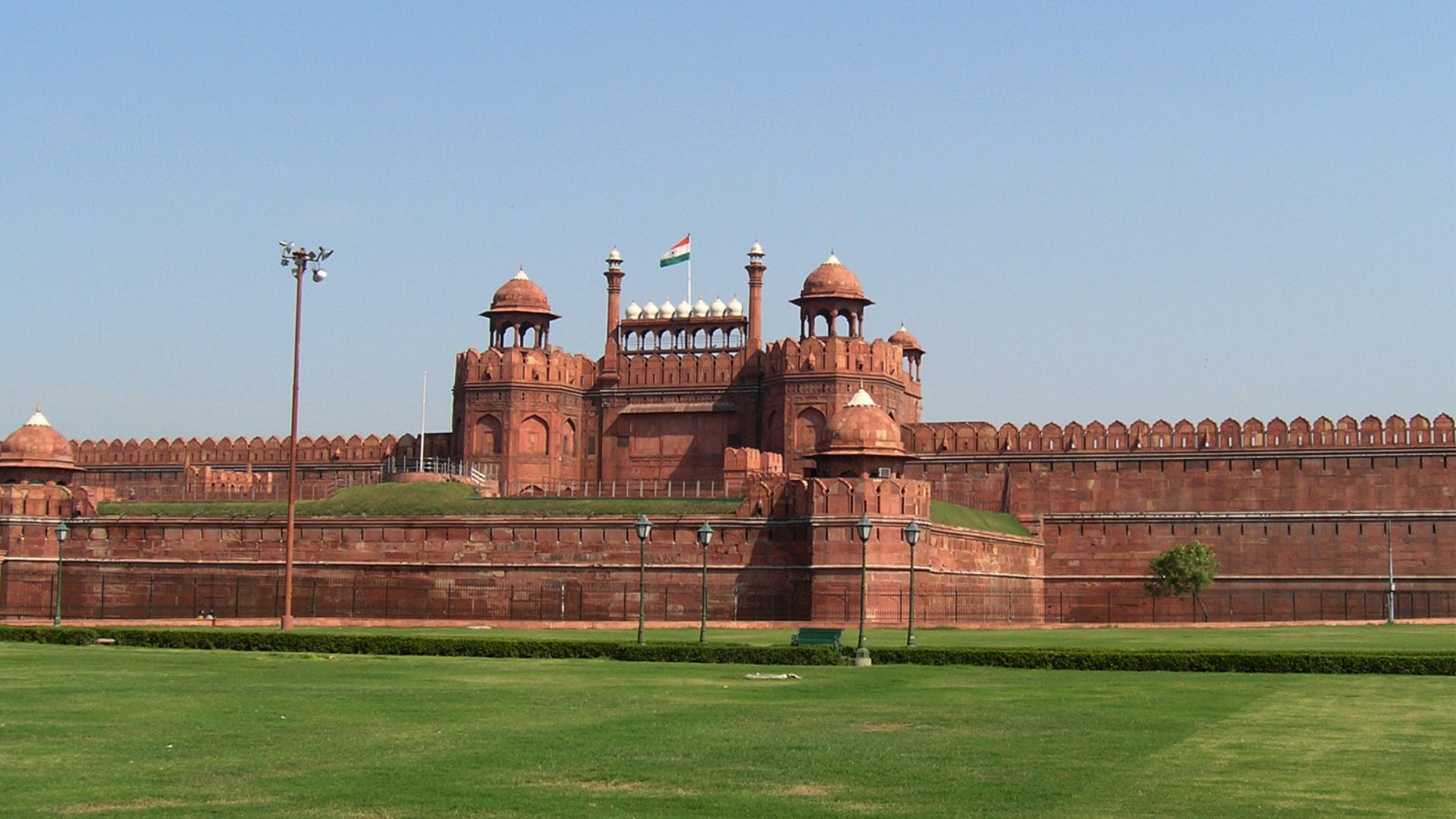
Spread across 256 acres of land and surrounded by a striking 18-metre-high wall, the spectacular fort got its name from the red-coloured stone extensively used in its construction. Famously known as ‘Lal Quila’, the Red Fort is undoubtedly one of the most iconic monuments in the country. It took almost ten years to complete construction on the entire fort. Measuring 900 metres by 550 metres, the walls of the fort cover a perimeter of 2.41 km and rise to a height of 33.5 metres.
This UNESCO World Heritage Site in the heart of Old Delhi is a testament to Mughal grandeur and sophistication. Its intricate design, featuring ornate arches, delicate marble inlays, and sprawling courtyards, showcases the zenith of Mughal architecture. Today, it remains a vibrant reminder of the country’s struggle for independence, and an annual focal point for the nation’s Independence Day celebrations, where the tricolour flag is unfurled from the iconic Lahori Gate.
Historical significance: The construction of the Red Fort began in 1638 under the rule of Emperor Shah Jahan of the Mughal Empire. It served as the main residence of Mughal emperors for over 200 years and witnessed numerous grand celebrations, including the famous Peacock Throne where Emperor Shah Jahan received foreign dignitaries. During the Indian Rebellion of 1857, the British took control of the fort, when they also removed several precious items, including the Koh-i-Noor diamond, from the fort. It then came under British rule and lost its status as a royal residence.
Places to visit nearby: Jama Masjid, India Gate, Jantar Mantar, National Museum and Chandni Chowk Market.
Timings: 9:30 am to 4:30 pm
How to reach:
By air: Indira Gandhi International Airport is the closest airport, 20 km away.
By train: Old Delhi Railway Station is only a km away.
Book your stay at The Lalit in New Delhi on Booking.com
Book your stay at The Lalit in New Delhi on Agoda.com
Lohagad Fort, Pune
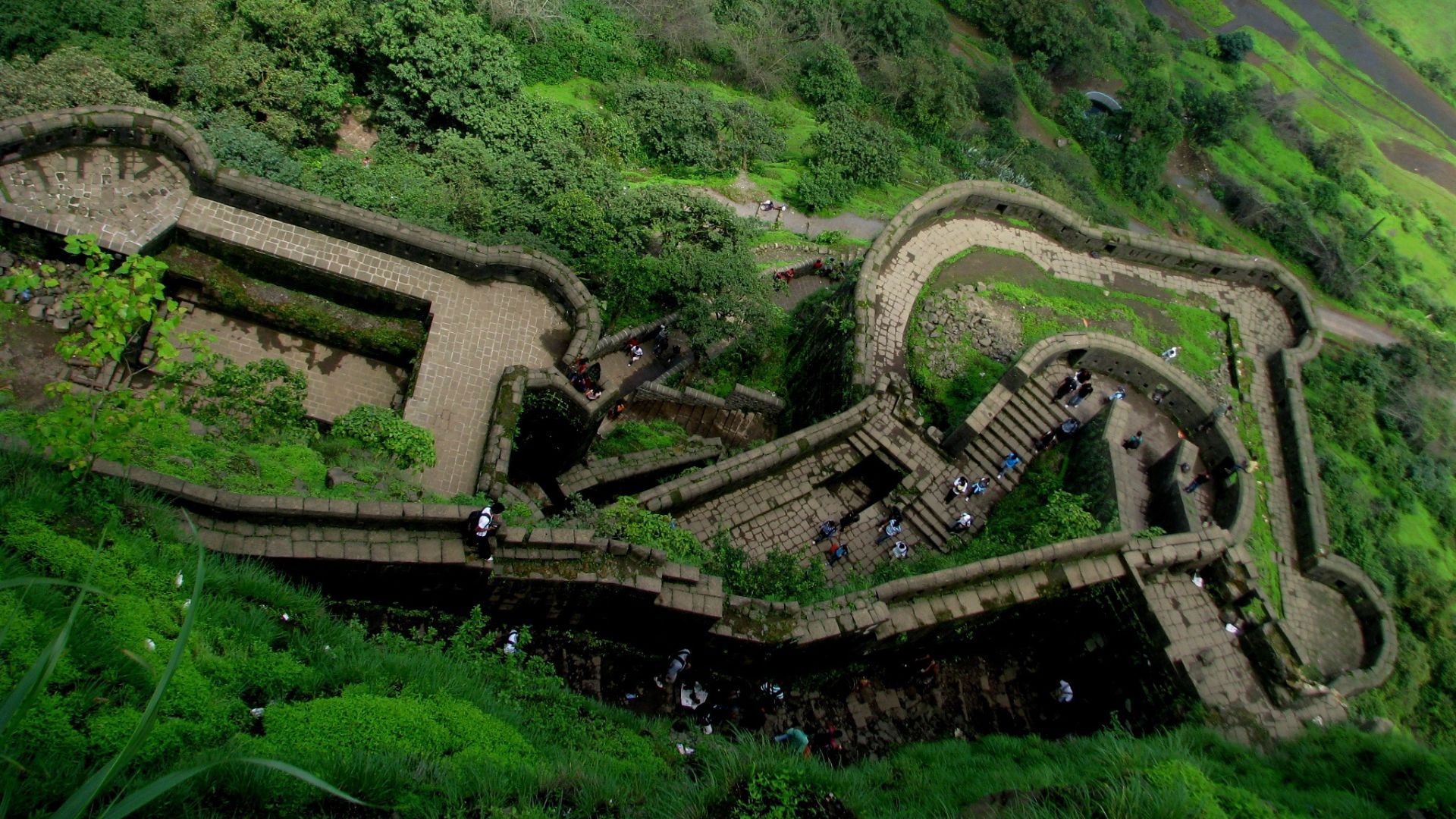
Lohagad Fort in Pune, Maharashtra, is a UNESCO-enlisted World Heritage Site that should be visited for the majestic structure and the breathtaking views it offers at an elevation of 3,400 feet. Get amazed by the traditional Indian architecture of the fort dating back to the 18th century. The fort gets its name from the spikes on the two entrance gates, the northern entrance and the southern entrance, which are made of eight different metals. This monument is an ideal trekking spot for nature and adventure enthusiasts. With three old palaces, the fort also houses a museum that should not be missed.
The fort’s impressive architecture, picturesque location, and historical legacy make it a beloved destination for history enthusiasts, trekkers, and tourists, who come to explore its ancient ruins and soak in the breathtaking views it offers of the Sahyadri mountains.
Historical significance: The Lohagad Fort’s origins can be traced back to around 300 BCE when it was built by the Satavahana dynasty. It was later occupied by various dynasties, including the Mauryas, the Chalukyas, and the Yadavas. The Lohagad Fort is most famously associated with the legendary Maratha king, Chhatrapati Shivaji, who captured the fort in 1648. The fort changed hands several times between the Marathas and the Mughals during the 18th century and was eventually captured by the Mughals in 1751 and remained under their control until the advent of British colonial rule.
Places to visit nearby: Pavana Lake, Della Adventure Park, Karla Caves and Tikona Fort.
Timings: 9 am to 5:30 pm
How to reach:
By air: Pune International Airport is the closest airport, 70.4 km away.
By train: Malavli Railway Station is the closest railway station, 58 km away.
Book your stay at Hyatt Hotel in Pune on Booking.com
Book your stay at Hyatt Hotel in Pune on Agoda.com
Jaisalmer Fort, Rajasthan
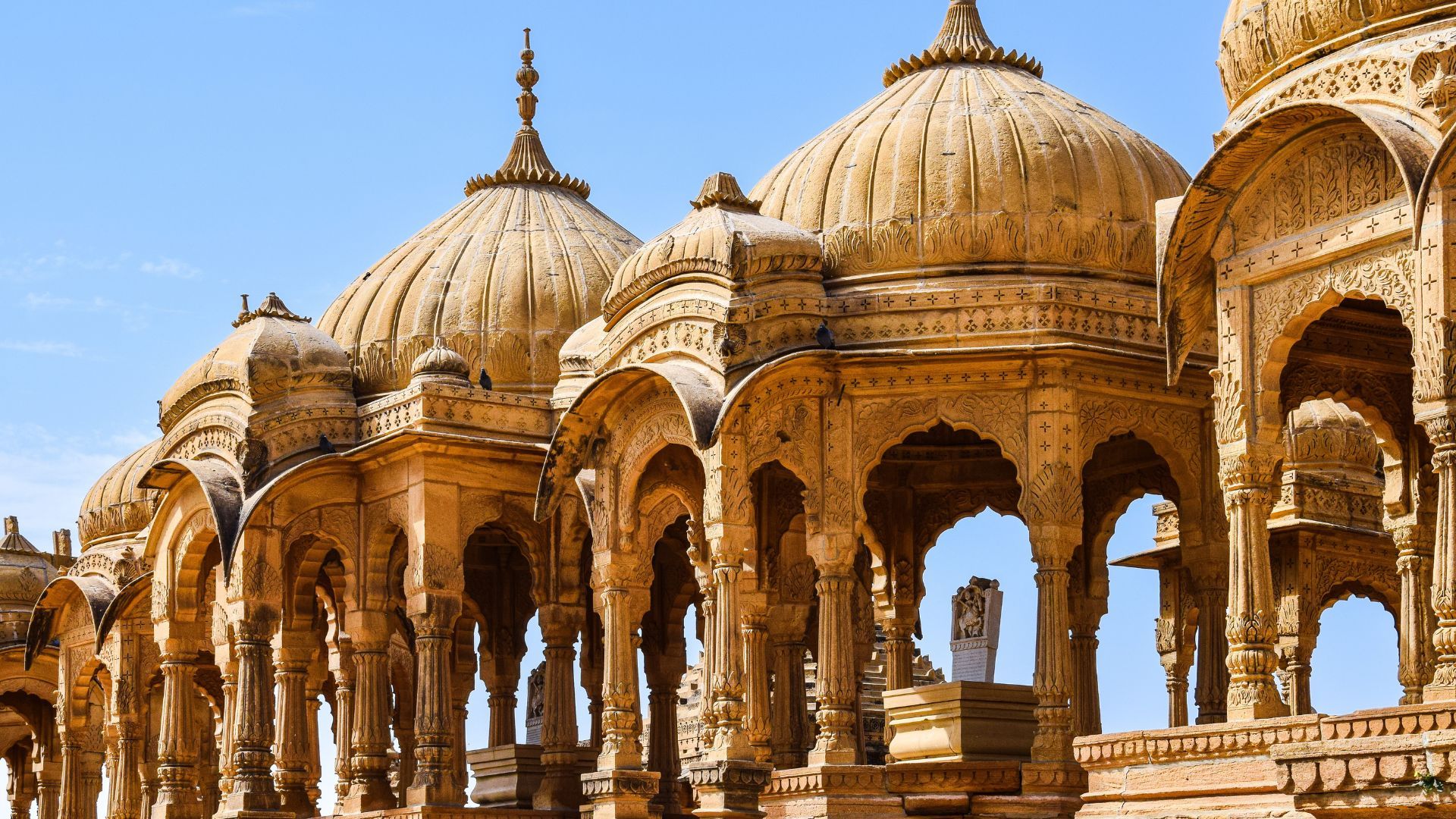
Jaisalmer Fort is one of the most enthralling structures in Jaisalmer, Rajasthan, that houses several temples, residences and palaces as it stands with four entrances on a hill. Explore the many hidden passageways and visit other attractions such as the Jain Temples, Raj Mahal and Laxmikanth Temple as you wait for the sun to set. During sunset, witness the fort shimmering like gold, thanks to the yellow sandstones used in its building. The 1,500 ft long and 750 ft wide fort in the Thar desert should be visited for its extraordinary architecture, which features Rajasthani style, Mughal patterns and Bengali art.
Today, Jaisalmer Fort stands not only as a historical marvel but also as a vibrant living monument. The fort’s mesmerising architecture, bustling bazaars, and cultural heritage make it a must-visit destination for tourists, offering a glimpse into Rajasthan’s rich and colourful past.
Historical significance: This UNESCO World Heritage Site boasts a rich history that dates back to its foundation in 1156 AD. The fort was built by Rawal Jaisal, the founder of Jaisalmer, and served as the capital of the Bhati Rajput clan. Over the centuries, Jaisalmer Fort served as a vital military stronghold, protecting the city from invasions by various rulers, including the Mughals. Jaisalmer’s location on the Silk Route also brought immense prosperity to the region.
Places to visit nearby: Nathmal ki Haveli, Gadisar Lake and Jaisalmer War Museum.
Timings: Open 24 hours.
How to reach:
By air: Jodhpur Airport is the closest airport, 268.3 km away.
By train: Jodhpur Railway Station is the closest, 264.8 km away.
Book your stay at Hotel Rawalkot in Jaisalmer on Booking.com
Book your stay at Hotel Rawalkot in Jaisalmer on Agoda.com
Agra Fort, Agra
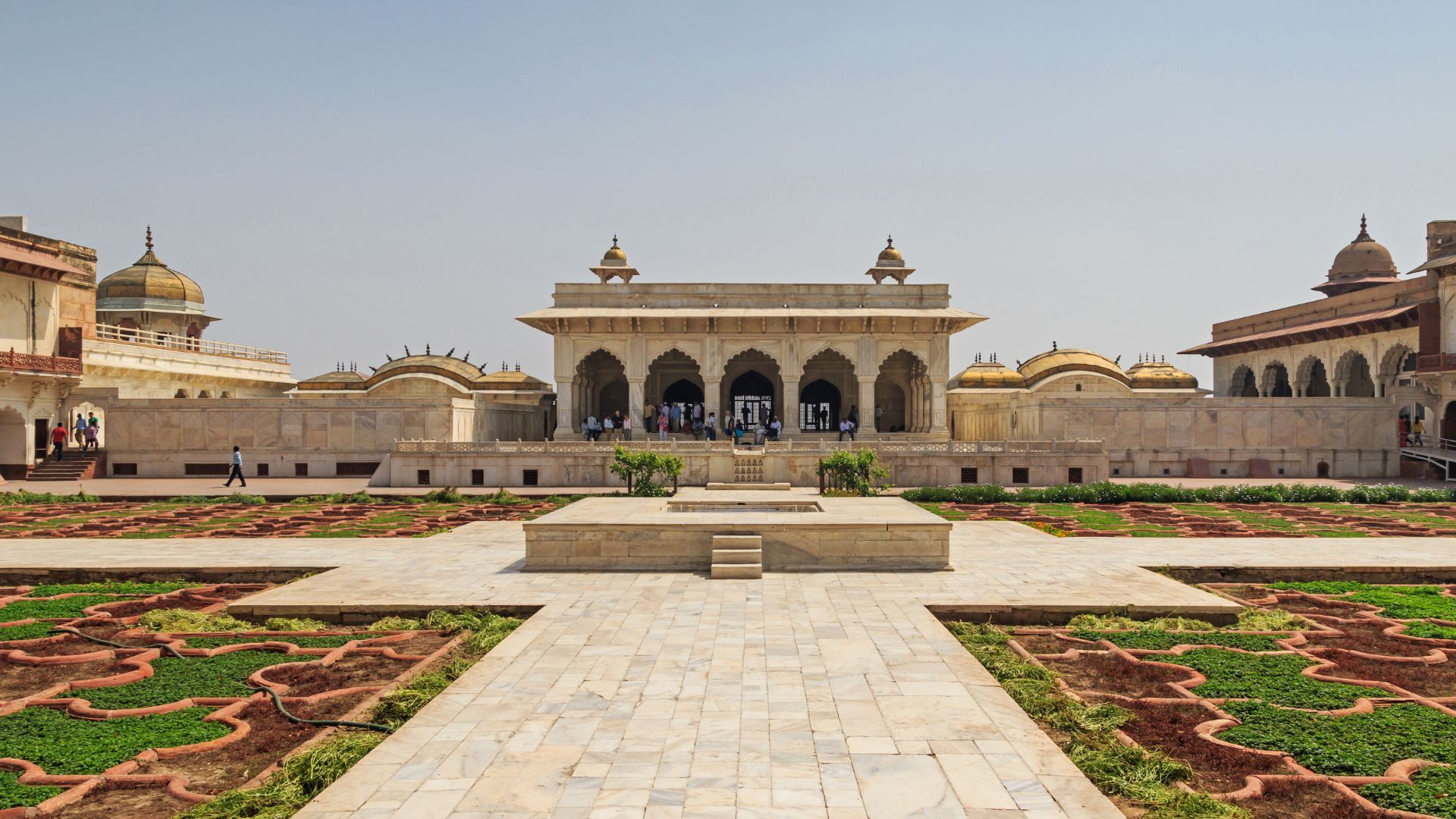
Made from red sandstone and marble, the remarkable fortress of Agra spans 94 acres and has also been declared a World Heritage Site by UNESCO. Often overshadowed by the wondrous Taj Mahal in the city, Agra Fort must be visited for its grand courtyards, the workmanship of the artists, and the Indo-Saracenic architecture. The structure was built by the Mughal emperor Akbar and served as the royal residence of the Mughal Kings until 1638. The fort houses several exquisite buildings, namely Moti Masjid, Diwan-i-Aam, Diwan-i-Khas and Musamman Burj, Jahangir’s Palace, Khaas Mahal and Sheesh Mahal, which are a visual delight.
Agra Fort is not only an architectural marvel but also a repository of India’s rich history, and its stunning design continues to captivate visitors from around the world, making it a key attraction in the city of Agra.
Historical significance: Agra Fort’s origins can be traced back to the 11th century when it was originally a brick fort. However, the present-day structure was built during the reign of Emperor Akbar in the mid-16th century. Agra Fort witnessed important historical events, including the imprisonment of Shah Jahan by his son Aurangzeb, who later died within its walls, looking across the Yamuna River at the Taj Mahal, the monument he had built for his beloved wife Mumtaz Mahal. Under British colonial rule, parts of the fort were used for military purposes, and it fell into a state of neglect.
Places to visit nearby: Taj Mahal, Mehtab Bagh, Jama Masjid and Anguri Bagh.
Timings: 6 am to 6 pm
How to reach:
By air: Pandit Deen Dayal Upadhyaya Airport is the closest airport, 8.2 km away.
By train: Agra Fort Railway Station is the closest railway station, 2 km away.
Book your stay at Trident Hotel in Agra on Booking.com
Book your stay at Trident Hotel in Agra on Agoda.com
Panhala Fort, Kolhapur
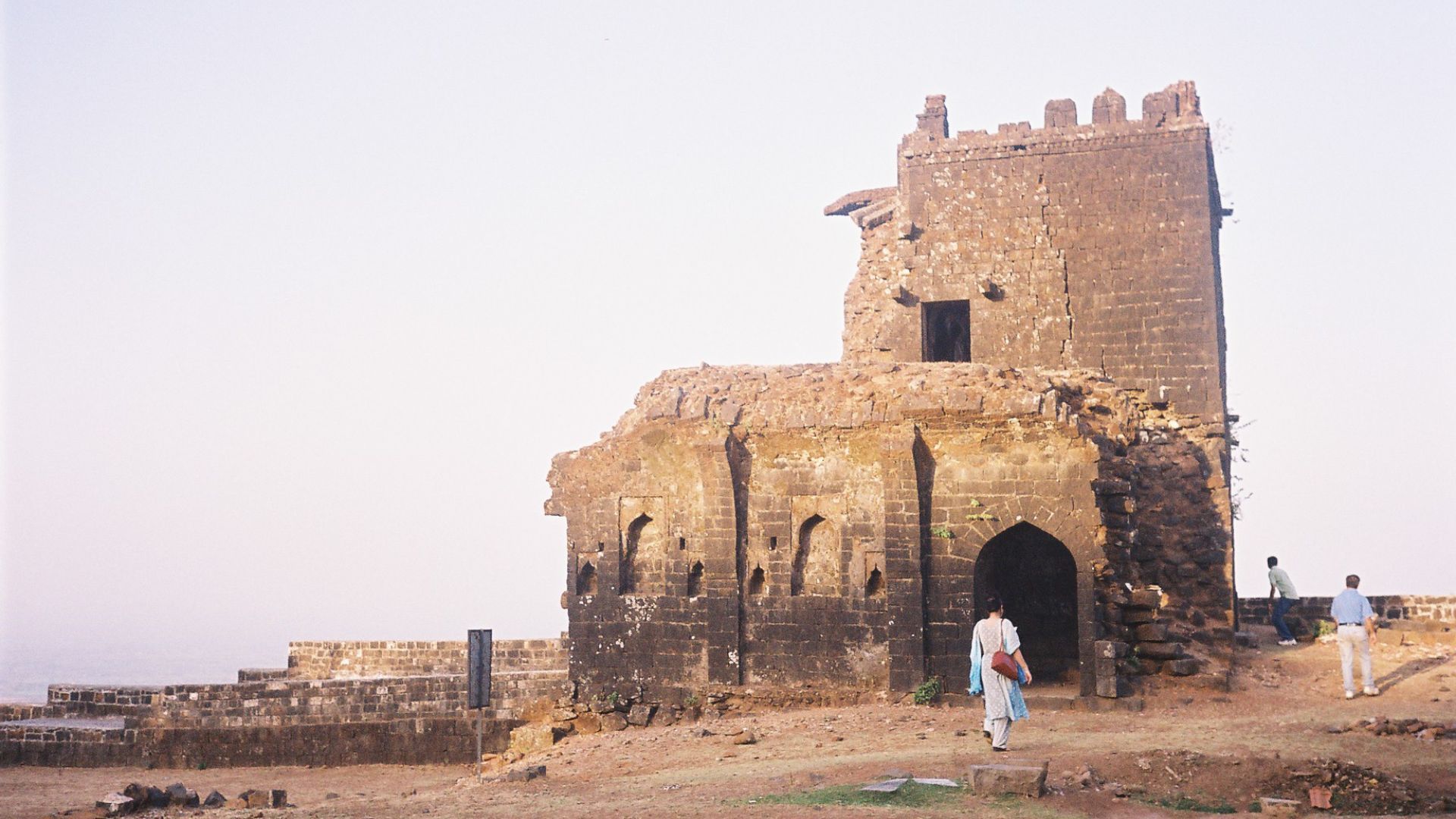
One of the biggest forts in the Deccan, the Panhala Fort is situated about 19 km from Kolhapur in Maharashtra. Sitting on the Sahyadri mountain range, the fort is placed at an elevation of 2,772 ft above sea level. With numerous underground tunnels, one of them extending to one km, several other structures in the fort are worth exploring. Visit major attractions such as Teen Darwaza, Wagh Darwaza, Andhar Bavadi, Kalavanticha Mahal, Ambarkhana, Dharma Kothi and Sajja Kothi. Built in the Bijapuri style, the design features peacock and lotus motifs across various structures.
The fort’s rich history and stunning panoramic views of the surrounding landscape make it a memorable visit for anyone interested in the legacy of the Marathas and the historical heritage of Maharashtra.
Historical significance: The Panhala Fort’s history can be traced to the 12th century when it was constructed by the Shilahara dynasty. In the 15th century, the Bahamani Sultanate captured Panhala and it was later taken over by the Adil Shahi dynasty. Chhatrapati Shivaji, the founder of the Maratha Empire, captured the fort in 1659. The Mughals, led by Aurangzeb, laid siege to Panhala Fort in 1690 when Maratha commander Baji Prabhu Deshpande sacrificed his life to ensure Shivaji’s safe exit. The fort finally fell to the Mughals and remained under their control for several years.
Places to visit nearby: Pusati Buruj (historical place), Kaneri Museum, Rankala Lake and Tabak Udyan (garden).
Timings: 7 am to 5:30 pm
How to reach:
By air: Kolhapur airport is the closest airport, 30.6 km away.
By train: Kolhapur Railway Station is the closest railway station, 21.8 km away.
Book your stay at Sayaji Hotel in Kolhapur on Booking.com
Book your stay at Sayaji Hotel in Kolhapur on Agoda.com
(Hero and feature image credit: A.Savin, FAL, via Wikimedia Commons)
Related: Visit These Historic Forts In Delhi For A Glimpse Into India’s Past
Frequently Asked Questions (FAQs)
– Are forts in India open to the public?
Yes, forts in India are open to the public.
– Are there any haunted forts in India?
Yes, India has several haunted forts. Bhangarh Fort in Rajasthan, Uparkot Fort in Gujarat and Firoz Shah Kotla Fort in Delhi are a few of them.
– Can I stay at forts in India?
Yes, you can stay at forts in India, as some forts have been converted into palaces. Ahilya Fort Heritage Hotel, Ramathra Fort and Hill Fort are some of the forts you can stay at.
– Are there any UNESCO World Heritage-listed forts in India?
Yes, six forts in Rajasthan, namely Chittorgarh, Kumbhalgarh, Jaisalmer, Ranthambhore (Sawai Madhopur), Gagaron (Jhalawar) and Amber (Jaipur), Lohagad Fort in Pune and Agra Fort are some of the world heritage sites recognised by UNESCO.

